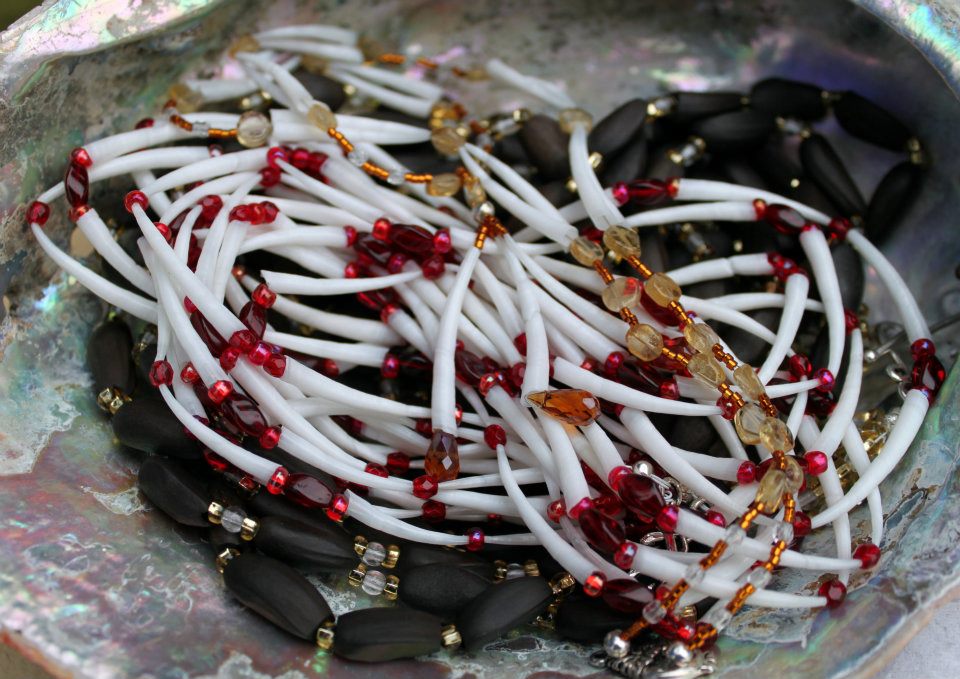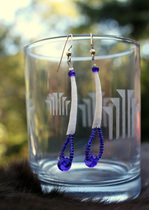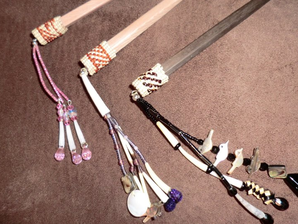|
na'k'idilyay -- 'ekar' -- íikiv -- Xwee-la'
Contemporary Jewelry
Contemporary Jewelry and the “Vanishing Indian”
By Brittani Orona (Hupa) Contemporary Artists:
|
|
|
|
The Native Women's Collective is proud to work with many artists who are blending the contemporary with the traditional. To find out more about our artists click here!
Contemporary Bloggers:
Cutcha Risling Baldy & Stephanie Lumsden
5 Reasons I Wear "Indian" Jewelry or Hupas...we been bling-blingin' since Year 1
by Cutcha Risling Baldy (Hupa, Karuk, Yurok)
We had a long history before contact with colonizers and settlers and for that long history we not only made things, we made beautiful things. They were aesthetically pleasing, they were also engineered like nobody's business. We have been making awesome jewelry for a long time. ...We were civilizations of people who had developed a way of life that included the artistic expression of sheer awesomeness. Whether it be through our architecture, our ideas, our ways of life, our ceremonies or our jewelry. READ MORE |
When I Stopped Being Afraid of Wearing My Indian Jewelry
by Stephanie Lumsden (Hoopa Valley Tribe)
I'll admit that my Indian jewelry and I have had an imperfect relationship. I most definitely love me some Indian jewelry - elk horn, pine nuts, dentalium shells, abalone, bear grass, beads, you name it. But I didn't always wear my jewelry or covet it so much. In fact, I used to be really careful about where I wore my Indian jewelry and often didn't wear it at all. Now I wear it everywhere and I feel good about it, it's indicative of a positive change in myself. READ MORE |




